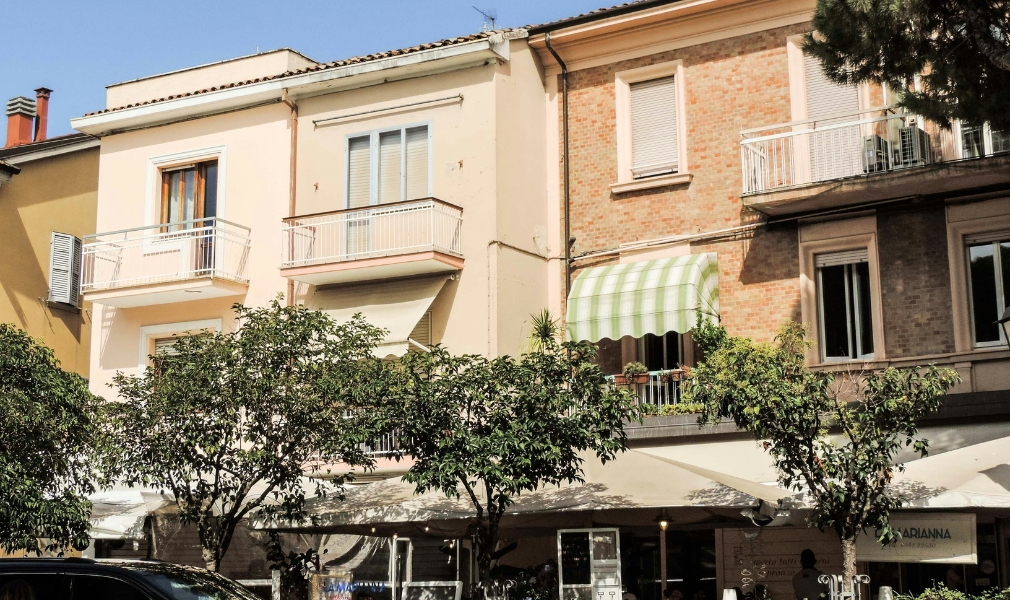PSA: The charming city of Rimini has been named as a candidate for Italy’s Capital of Culture 2026. Famed for having more than nine miles of beautiful beaches along the Adriatic coast and reliably sunny weather, this gorgeous holiday hotspot attracts crowds from around Italy and Europe every summer. Located in the region of Emilia-Romagna, the birthplace of Parmigiano Reggiano cheese, Parma ham, and balsamic vinegar, and on the shoreline of the Adriatic Sea with its abundant fresh fish, visitors to this small perfectly-formed seaside town can enjoy some of Italy’s finest fare during their stay. But there’s more to Rimini than top-notch food and stunning beaches. Here are five ways to explore this gem of a destination.

Study Rimini’s classical past
Back in 268 BCE, Rimini was known as Ariminum, a newly built garrison town on the coast between two Roman roads. Today, traces of its classical origins remain and the best place to start learning about them is at the visitor center inside the deconsecrated church of Santa Maria ad Nives.

There are some impressive Roman monuments around the city, too. First, the beautiful Istrian stone arch of Augustus, erected by the Roman Senate in 27 BCE, to honor emperor Gaius Julius Caesar Augustus. Next, the 2,000-year-old Tiberius Bridge, which spans the Marecchia and is still used as a pedestrian bridge. Finally, the Surgeon’s House: intriguing ruins of a large excavated Roman villa, complete with frescoes, murals, and ancient medical instruments.

Get a bird’s-eye view from a giant Ferris wheel
Admire the city and beaches from above as you ride the impressively large Ruota Panoramica, Rimini’s 55-meter-tall Ferris wheel. Located in the port area, close to the main beach, the cabins on this wonderful wheel move slowly, so the whole journey takes around 20 minutes. Bring your camera and capture aerial shots of the beach, and see if you can spot the Republic of San Marino, some six miles away.

Learn about one of its most famous citizens, Federico Fellini
One of the most influential filmmakers in cinema history, Federico Fellini has close ties to Rimini. Born there in 1920, he lived in the city until 1939. Today his hometown celebrates him at the Federico Fellini International Museum. The museum occupies three locations across the city: Castel Sismondo, a 15th-century castle; Palazzo del Fulgor, an 18th-century palace; and Piazza Malatesta, a historic square. Each venue acts as a showcase for the famous Italian director and screenwriter’s acclaimed work.
Want even more Fellini? Take a wander through the winding streets and colorful houses of Borgo San Giuliano. Here, buildings are decorated with stunning murals, many of which are inspired by Fellini’s masterpieces.

Browse the stalls at Rimini’s weekly markets
Every Wednesday and Saturday morning throughout the year, one of Emilia-Romagna’s largest weekly markets takes over the historic town center near the covered market (open daily and a treat to explore).
On Sundays, hunt for treasure at the Piazza Tre Martiri, the Via IV Novembre, and parts of the Corso d’Augusto. Every week, during the day (except in July and December), a gorgeous exhibition and market takes place, with antique, vintage, and modern artifacts on display. Looking for a keepsake for your home? Browse the many stalls selling books, furniture, ceramics, silverware, and glassware from every era. Perhaps you prefer to wear a precious piece of Rimini? Take a look at the beautiful jewelry on offer.

Explore the whole of Italy at a stunning vintage theme park
A couple of miles north of Rimini is a superb vintage theme park that opened in 1970 and has been recently refurbished. Italia in Miniatura (“Italy in Miniature”) has over 270 of Italy’s most striking monuments reproduced to scale. Spend a day wandering from the snowy Alps down to Sicily on foot. To give some perspective, a monorail runs around the park, offering excellent views of the landmarks from above. Want to explore Venice, but can’t face the crowds? Then ride a gondola through the recreated Canal Grande of Venice, before landing in a smaller version of St Mark’s Square. Other attractions—including a parrot enclosure—offer a diversion from this rather fun, quirky geography lesson.











